PTE Reading Fill In Blanks Bộ Đề Tủ Cập Nhật Mới Nhất
Nội dung bài viết
Tiếp tục chuỗi bài Reading Fill In Blanks Đề Tủ nào mọi người ơi! Đây là các đề mà team Helper gom được trong ngày thi 10/07 và 17/07. Hãy làm bài tập và comment câu trả lời bên dưới nhé!

Reading 1 | Đề tủ PTE Reading Fill In Blanks
Social reforms are normally initiated as a result of __rational/process/statistical/structural__ analyses of factors such as crime rates and poverty levels etc. Large-scale population can result from __inspections/projections/observation/evaluation__ devised by statisticians. Manufacturers can provide better products at lower costs by __using/maintaining/retaining/convicting__ statistical control tools, such as control charts. Diseases are controlled through analyses designed to __cure/practice/participate/anticipate__ epidemics. Endangered species of fish and other wildlife are __rescued/managed/protected/hunted__ through regulations and laws that react to statistical estimates of changing population sizes. __Even/Through/In spite of/Therefore__ statistical analysis of fatality rates, legislators can better justify laws, such as those governing air pollution, auto inspections, seat belt and airbag use, and drunk driving.
Reading 2 | Đề tủ PTE Reading Fill In Blanks
The purpose of the workforce plan is to enable a business to achieve its overall objective by successfully putting its corporate strategies into __action/business/order/bargain__. So it is these whole business objective and strategies that are the __triggering/sensible/starting/objective__point for assessing the number and type of staff of workers that will be needed in the future. Where growth is the objective, the business may be planning to increase sales by targeting new markets for __introducing/launching/producing/generating__ new products. The workforce plan will need to set out how the people required to make this happen will be recruited, retained, developed or relocated if cost minimization is the goal, and if workforce __deficiency/capacity/efficiency/capability__ is one of the strategies, plans will need to be in place to __decrease/develop/launch/boost__ productivity, cut wages bills or delays the organizational structure.
>>> Xem thêm: PTE fill in blanks – Bứt phá điểm số nhanh chóng
Reading 3 | Đề tủ PTE Reading Fill In Blanks
Professor Richard Kimbell directed the DES funded Assessment of Performance Unit research project in Design and Technology. In 1990 he __announced/introduced/founded/followed__ the Technology Education Research Unit (TERU) at Goldsmiths College, University of London, which is now running a wide range of funded research projects in design and technology and IT. He has published widely in the field, including reports __challenge/commissioned/correlated/supplement__ by the Congress of the United States, UNESCO and NATO; he has written and presented television programs and regularly lectures internationally. His latest book Assessing Technology: International Trends in Curriculum and Assessment won the international technology education book of the year award from the Council for Technology Teacher Education at ITEA in 1999 in Minneapolis, USA. Kay Stables is Reader in Design and Technology Education and former Head of the Design Department at Goldsmiths College, University of London. She started her career as a textiles teacher, moving to Goldsmiths as a __form/alternative/nature/part__ of the APU D&T research team. From 1990–1992, she was Project Director for the Key Stage 1 Technology SAT developments and __improved/followed/started/advanced__ this as Research Associate on the Understanding Technological Approaches project which built case studies of D&T work from children aged 5–16. Most recently she has conducted, with Richard Kimbell, an evaluation of the __benefits/advances/impact/difficulty__ of a technology education initiative in South Africa and is currently researching into the use of handling collections in developing D&T __leading/reliability/evolutionary/capability__ and literacy.
Reading 4 | Đề tủ PTE Reading Fill In Blanks
Recently, research into embryonic development has given us an even better insight into how major structural changes might occur in a given population of organisms. We now understand that there are two major types of genes: developmental and “housekeeping” genes. Developmental genes are those that are expressed during embryonic development, and their proteins __deal with/delineate/control/organise__ the symmetry, skeletal development, organ placement, and overall form of the developing animal. __According to/For/Additionally/In contrast, “housekeeping” genes are expressed during the animal’s daily life to generate proteins which keep the cells, tissues, and organs in the body functioning properly. __As/Besides/After/Within you might suspect, mutations in developmental genes can have radical consequences for body form and function, whereas mutations in “housekeeping” genes tend to __effect/spread/affect/diffuse__ the health and reproductive success of the post-embryonic animal.
Reading 5 | Đề tủ PTE Reading Fill In Blanks
The desire to build big is nothing new. Big buildings have been used to show off power and wealth; to honor leaders or religious beliefs; to stretch the limits of what’s possible; and even as simple __understanding/idea/competition/antagonist__ among owners, families, architects, and builders. Some of the most __dramatic/drastic/theatrical/natural__ buildings of the past include the pyramids in Egypt, the skinny towers stretching towards the sky in Italian hill towns, and the gothic cathedrals of France. While these types of buildings may look very different from each other, they all have one thing in __general/average/common/ordinary__. They were built with masonry or stone walls supporting most of the weight (so-called load-bearing walls), including that of the floors, the people, and everything the rooms contained. Because of this, the height of these buildings was limited by how massive and heavy they had to be at the base. Two __developments/expansions/progressions/enlargements__ in the 19th century paved the way for a whole new type of building: the skyscraper. The first was the development of a safe elevator. Primitive elevators of various designs had been used for centuries, and starting in the mid19th century, steam-operated elevators were used to move materials in factories, mines, and warehouses. But these elevators were not __measurably/considered/only/perceptively__ safe for people; if the cable broke, they would plummet to the bottom of the elevator shaft.
Reading 6 | Đề tủ PTE Reading Fill In Blanks
One of the most important things to remember is that “classic” does not necessarily translate to “favorite” or “bestselling”. Literature is instead considered classic when it has stood the test of time and it stands the test of time when the artistic quality it expresses – be it an __indication/expression/impression/evidence__ of life, truth, beauty, or anything about the universal human condition – continues to be relevant, and continues to inspire emotional responses, no matter the period in which the work was written. Indeed, classic literature is considered as such __despite/because/consisting/regardless__ of book sales or public popularity. That said, classic literature__apparently/significantly/usually/dramatically__ merits lasting recognition from critics and other people in a position to influence such decisions and has a universal appeal. And, while effective use of language as well as technical excellence is a must, not everything that is well-written or is characterized by technical achievement or critical acclaim will automatically be considered a classic. Conversely, works that have not been acknowledged or received __negatively/proudly/positively/actively__ by the writer’s contemporaries or critics can still be considered as classics.
Đáp án
Reading 1
- statistical
- projections
- using
- anticipate
- protected
- Through
Reading 2
- action
- starting
- launching
- efficiency
- boost
Reading 3
- founded
- commissioned
- part
- followed
- impact
- capability
Reading 4
- control
- In contrast
- As
- affect
Reading 5
- competition
- dramatic
- common
- developments
- considered
Reading 6
- expression
- regardless
- usually
- positively
Xem thêm về Đề thi mẫu PTE
Các câu hỏi thường gặp về phần thi Reading Fill In The Blanks
Làm cách nào để cải thiện khả năng Reading PTE của mình?
Thực hành đọc với thời lượng như nhau mỗi ngày Mục tiêu đọc ít nhất 220 từ mỗi phút. Đọc các bài báo ngắn khoảng 300 từ. Tạo thói quen đọc thường xuyên và ở bất kỳ đâu.
Có bao nhiêu câu Reading Fill In The Blanks PTE?
Sẽ có 4 đến 5 đoạn đọc, mỗi đoạn gồm 4 đến 5 câu hỏi. Về tổng thể, một ứng cử viên PTE có thể có từ 16 đến 25 câu hỏi để trả lời. Mỗi câu trả lời sai sẽ không bị trừ điểm, vì vậy hãy cố gắng trả lời tất cả câu hỏi, kể cả khi bạn không chắc chắn về đáp án.
Khi bạn đang trả lời một câu hỏi Reading Fill In The Blanks, bạn cần phải cẩn thận điều gì khi nhập câu trả lời của mình?
Hãy chắc chắn rằng bạn điền đúng từ, đúng số lượng từ, viết đúng chính tả cũng như là dạng số ít hay số nhiều của từ. Thường thí sinh sẽ bị mất điểm đáng tiếc vì nhầm lẫn từ là số ít hay số nhiều
Lời Kết
Để luyện thi PTE đạt hiệu quả cao hơn, bạn có thể mua các bài thi thử PTE của Pearson tại website sau: https://pearsonpte.com/preparation/practice-tests/scored-practice-test/.
Để đạt hiệu quả tốt hơn, các bạn hãy luyện tập đề tủ pte reading fill in the blanks exercises trên phần mềm thi thử miễn phí PTE.TOOLS.
Hướng dẫn sử dụng PTE.Tools – Công cụ ôn thi PTE hàng đầu.
Bài viết bạn không nên bỏ qua:
- Các dạng câu hỏi bài thi pte mới nhất hiện nay
- Giải đáp thắc mắc về bài thi Summarize Spoken Text PTE
- Bộ câu hỏi ôn thi PTE Repeat Sentence với 100% câu hỏi từ đề thi thật
- Phương pháp làm bài thi PTE Mutiple Choice Single Answer nâng điểm tối đa
- Chiên thuật liên kết câu PTE Reorder Paragraph
- PTE reorder paragraph 10 phút làm bài cùng chuyên gia
- Bật mí answer short questions pte – 50 câu phổ biến nhất






 Đăng ký tư vấn ngay
Đăng ký tư vấn ngay
